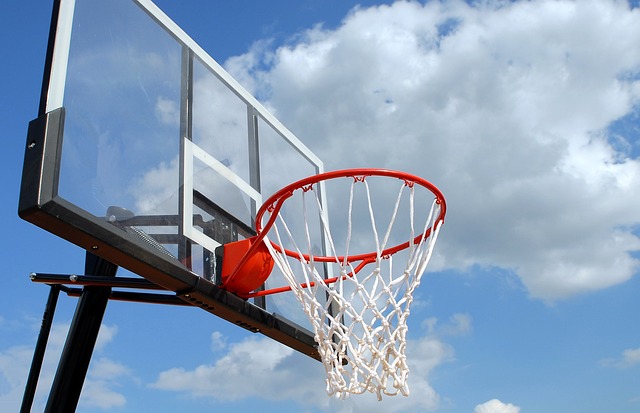When you step onto a basketball court, you may not think twice about the size of the hoop. However, the diameter of a standard basketball hoop is an important factor that affects the game. Knowing the dimensions of the hoop can help players improve their shooting accuracy and understand the rules of the game.
So, what is the diameter of a standard basketball hoop? According to the National Basketball Association (NBA), the diameter of a regulation basketball hoop is 18 inches. This measurement applies to both professional and amateur games and is used to determine whether a shot is successful or not. A basketball must pass through the hoop from above in order to count as a score.
Understanding the diameter of a basketball hoop is just one aspect of the game, but it is an important one. Whether you are a seasoned player or a beginner, knowing the dimensions of the hoop can help you improve your skills and enjoy the game to its fullest.
Standard Basketball Hoop Dimensions
When it comes to basketball, it’s important to know the standard dimensions of the hoop. The diameter of a standard basketball hoop is 18 inches (45.7 cm). This is the distance between the inside edges of the hoop, which is the area where the ball must pass through to score a point.
In addition to the diameter of the hoop, there are other dimensions that are important to consider. The height of the hoop is 10 feet (3.05 meters) from the ground to the rim. This height is the same for both men’s and women’s basketball.
The backboard is another important dimension to consider. The standard size of a backboard is 72 inches (183 cm) wide by 42 inches (110 cm) tall. The backboard is typically made of tempered glass or acrylic and is mounted to a support structure that is attached to the pole or wall.
Finally, the distance from the baseline to the free-throw line is 15 feet (4.57 meters) for both men’s and women’s basketball. The distance from the free-throw line to the front of the rim is 18 feet 10 inches (5.74 meters) for men’s basketball and 16 feet 1 inch (4.9 meters) for women’s basketball.
Overall, understanding the standard dimensions of a basketball hoop is important for players, coaches, and officials. By knowing these dimensions, you can ensure that you are playing on a regulation-size court and can make accurate judgments on whether a shot is a made basket or not.
Diameter of a Standard Basketball Hoop
When it comes to playing basketball, it’s crucial to have a clear understanding of the dimensions of the court and equipment. One of the most important pieces of equipment is the basketball hoop, which is where the ball is scored. The diameter of a standard basketball hoop is a crucial measurement to know, as it can affect the success of your shots.
The diameter of a standard basketball hoop is 18 inches. This measurement is taken from the inside of the rim, which is the metal ring that the net is attached to. The rim itself is made of solid steel and is 5/8 of an inch in diameter.
It’s important to note that the 18-inch diameter is for regulation-size basketball hoops. Some smaller or recreational hoops may have a smaller diameter, which can make it easier to score. However, if you’re playing in an official game or tournament, you’ll need to use a regulation-size hoop.
Knowing the diameter of the basketball hoop can help you improve your shooting accuracy. By understanding the size of the target you’re aiming for, you can adjust your shot accordingly. Additionally, knowing the dimensions of the hoop can help you determine whether a shot is legal or not. If the ball passes through the hoop from above, it’s considered a legal shot. However, if the ball passes through the hoop from below, it’s not considered a basket.
Comparison with Other Sports Equipment
When it comes to sports equipment, the diameter of a standard basketball hoop is not the only measurement that matters. Here are some comparisons with other sports equipment:
- The standard size for a soccer goal is 24 feet in width and 8 feet in height, resulting in an opening that is 8 yards wide and 8 feet high.
- The height of a volleyball net is 7 feet 11 5/8 inches for men and 7 feet 4 1/8 inches for women. For indoor volleyball, the net width is 36 feet, while for beach volleyball, it is 30 feet.
- A tennis net is 3 feet high at the center and 3 feet 6 inches high at the posts. The net is 42 feet long for singles matches and 78 feet long for doubles matches.
As you can see, the diameter of a basketball hoop is just one piece of information when it comes to comparing sports equipment. Each sport has its own unique measurements that contribute to the overall playing experience.
In addition to size, the materials used to make sports equipment can also vary. For example, basketball hoops are often made of metal, while soccer goals can be made of metal or plastic. Volleyball nets are typically made of nylon or polyester, and tennis nets are made of braided cord or synthetic materials.
Overall, understanding the measurements and materials of sports equipment can help you make informed decisions when purchasing or using equipment for your favorite sports.
Regulations and Standards
When it comes to basketball, there are specific regulations and standards that must be followed to ensure fair play. The diameter of a standard basketball hoop is one of the most important regulations that every player and team must adhere to.
According to the National Basketball Association (NBA), the diameter of a standard basketball hoop is 18 inches. This measurement is consistent across all levels of basketball, including high school, college, and professional leagues.
In addition to the diameter, there are other regulations and standards that must be followed when it comes to basketball hoops. For example, the height of the rim must be 10 feet from the ground. The backboard must be rectangular, measuring 72 inches wide and 42 inches tall. The rim itself must be made of metal and be able to withstand the force of a basketball being dunked.
It’s important to note that these regulations and standards are in place to ensure a level playing field for all players. By adhering to these guidelines, players can focus on their skills and abilities rather than worrying about the equipment they are playing with.
Overall, understanding the regulations and standards of basketball is essential for anyone who wants to play the game. By following these guidelines, you can ensure that you are playing fair and that you are giving yourself the best chance to succeed.
Impact on the Game
When it comes to basketball, the diameter of the hoop is one of the most important factors that affect the game. The standard diameter of a basketball hoop is 18 inches, which means that the ball needs to be shot through this small opening to score a point. This may seem like a small detail, but it has a significant impact on the game.
The size of the hoop affects the accuracy of the shot. Shooting a basketball through an 18-inch hoop requires precision and skill. Players need to aim carefully to make sure that the ball goes through the hoop. This means that shooting from a distance or under pressure becomes more challenging, making the game more exciting and competitive.
The size of the hoop also affects the strategy of the game. Teams need to adjust their tactics based on the size of the hoop. For example, if the opposing team has a strong defense, a team may need to rely on outside shooting to score points. On the other hand, if the opposing team has a weak defense, a team may choose to drive to the basket and take high-percentage shots.
Variations in Basketball Hoop Sizes
Basketball hoops come in different sizes depending on the intended use. While the standard size of a basketball hoop is 18 inches in diameter, there are variations in basketball hoop sizes depending on the age and skill level of the players.
Youth Basketball Hoops
Youth basketball hoops are designed for children and young players. They are smaller in size to accommodate the height and skill level of young players. The following table shows the different sizes of youth basketball hoops:
| Age Group | Hoop Size |
|---|---|
| 5-8 years | 6-7 feet |
| 9-11 years | 8 feet |
| 12-14 years | 9 feet |
As you can see, the hoop size varies depending on the age group of the players. This ensures that young players can develop their skills and have fun playing basketball without struggling to reach the hoop.
Professional Basketball Hoops
Professional basketball hoops are designed for adult players who play at a high level of skill. They are larger in size and are designed to meet the standards set by professional basketball organizations. The following table shows the different sizes of professional basketball hoops:
| Level of Play | Hoop Size |
|---|---|
| NBA | 18 inches |
| WNBA | 18 inches |
| NCAA | 18 inches |
| FIBA | 45 cm |
As you can see, the hoop size is the same for NBA, WNBA, and NCAA basketball. FIBA basketball, which is played internationally, has a slightly smaller hoop size of 45 cm. This ensures that the game is played at a consistent level across different leagues.
Conclusion
You now have a good understanding of the diameter of a standard basketball hoop. A regulation basketball hoop has a diameter of 18 inches, which is the same as 45.7 centimeters. This size is consistent across all levels of play, from youth leagues to professional basketball.
It’s important to note that the diameter of the hoop is not the same as the size of the basketball used in the game. A regulation basketball has a diameter of 9.4 to 9.43 inches, which is equivalent to 23.8 to 23.9 centimeters.
Knowing the diameter of a basketball hoop can help you improve your shooting skills and make more accurate shots. It’s also useful for coaches and players to understand the dimensions of the court and equipment they are using.
Overall, the diameter of a standard basketball hoop is a fundamental aspect of the game of basketball. By understanding this measurement, you can better appreciate the precision and skill required to make a successful shot.







